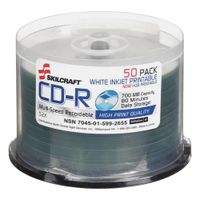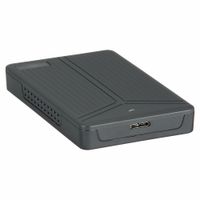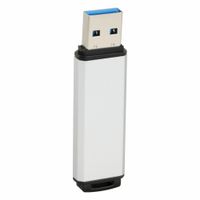Call +(254) 703 030 000 / 751 483 999 / 721 704 777
- Home
- Office Supplies
- Computer Supplies Media
- Computer Storage Devices
.....Read More
Frequently Asked Questions
What is the difference between SSD and HDD?
SSD (Solid State Drive) and HDD (Hard Disk Drive) are two types of storage devices used in computers, differing primarily in technology, performance, and durability.
1. **Technology**:
- **HDD**: Uses magnetic disks (platters) to read and write data. A mechanical arm moves across the spinning disks to access data, making it a mechanical device.
- **SSD**: Utilizes flash memory (NAND) to store data, similar to USB drives. It has no moving parts, relying on integrated circuits.
2. **Performance**:
- **HDD**: Generally slower due to mechanical movement. Typical read/write speeds range from 80 to 160 MB/s.
- **SSD**: Significantly faster, with speeds ranging from 200 to 550 MB/s for SATA SSDs, and even higher for NVMe SSDs, reaching up to 3500 MB/s.
3. **Durability**:
- **HDD**: More prone to physical damage due to moving parts. Susceptible to wear and tear over time.
- **SSD**: More durable and shock-resistant, as it lacks moving parts.
4. **Lifespan**:
- **HDD**: Generally has a longer lifespan in terms of write cycles but can fail due to mechanical issues.
- **SSD**: Limited write cycles, but advancements in technology have improved longevity.
5. **Cost**:
- **HDD**: Cheaper per gigabyte, making it cost-effective for large storage needs.
- **SSD**: More expensive per gigabyte, but prices are decreasing.
6. **Noise and Heat**:
- **HDD**: Produces noise and heat due to spinning disks.
- **SSD**: Silent and generates less heat.
7. **Use Cases**:
- **HDD**: Suitable for bulk storage and applications where speed is less critical.
- **SSD**: Ideal for operating systems, applications, and tasks requiring fast data access.
In summary, SSDs offer superior speed and durability, while HDDs provide cost-effective storage for large volumes of data.
How do I choose the right external hard drive?
1. **Storage Capacity**: Determine your storage needs. For basic document storage, 500GB to 1TB may suffice. For media files or backups, consider 2TB or more.
2. **Drive Type**: Choose between HDDs (Hard Disk Drives) and SSDs (Solid State Drives). HDDs are cheaper and offer more storage, while SSDs are faster, more durable, and more expensive.
3. **Portability**: If you need to carry the drive frequently, opt for a portable external hard drive. Desktop drives are bulkier but offer more storage.
4. **Connectivity**: Ensure compatibility with your devices. Common interfaces include USB 3.0, USB-C, Thunderbolt, and eSATA. USB-C and Thunderbolt offer faster data transfer rates.
5. **Speed**: SSDs generally offer faster read/write speeds than HDDs. If speed is crucial, prioritize SSDs or HDDs with higher RPM (7200 RPM over 5400 RPM).
6. **Durability and Build Quality**: For rugged use, consider drives with shock resistance, water resistance, or protective casings.
7. **Security Features**: Look for drives with built-in encryption or password protection if data security is a concern.
8. **Brand and Warranty**: Choose reputable brands known for reliability. Check warranty terms; a longer warranty often indicates confidence in the product.
9. **Price**: Balance your budget with your needs. Compare prices across different brands and models to find the best value.
10. **Reviews and Recommendations**: Read user reviews and expert recommendations to gauge performance and reliability.
11. **Compatibility**: Ensure the drive is compatible with your operating system (Windows, macOS, Linux).
12. **Additional Features**: Consider features like automatic backup software, cloud storage integration, or RAID support for redundancy.
What is the lifespan of a flash drive?
The lifespan of a flash drive is typically determined by two main factors: the number of write/erase cycles it can endure and the quality of its components. Flash drives use NAND flash memory, which has a finite number of program/erase (P/E) cycles. Consumer-grade flash drives generally support between 3,000 to 10,000 P/E cycles, while higher-end models, such as those used in industrial or enterprise applications, can support up to 100,000 cycles or more.
In practical terms, the lifespan of a flash drive can range from a few years to over a decade, depending on usage patterns. If a flash drive is used primarily for reading data and infrequent writing, it can last significantly longer. However, frequent writing and erasing can wear out the memory cells more quickly.
Another factor influencing lifespan is the quality of the flash memory and the controller used in the drive. Higher-quality components can provide better wear leveling, error correction, and overall durability, extending the drive's useful life.
Environmental conditions also play a role. Extreme temperatures, humidity, and physical damage can shorten a flash drive's lifespan. Proper handling and storage can mitigate these risks.
In summary, while a flash drive's lifespan can vary widely, typical usage patterns suggest a lifespan of 5 to 10 years for consumer-grade drives. Regular backups and careful handling can help ensure data integrity over the drive's lifetime.
How do I recover data from a corrupted memory card?
To recover data from a corrupted memory card, follow these steps:
1. **Stop Using the Card**: Immediately cease using the card to prevent overwriting data.
2. **Check Card Reader and Connections**: Ensure the card reader and connections are functioning properly. Try a different reader or device.
3. **Assign a New Drive Letter**: On Windows, go to Disk Management, right-click the memory card, and select "Change Drive Letter and Paths" to assign a new letter.
4. **Use Built-in Tools**:
- On Windows, use "chkdsk" by opening Command Prompt and typing `chkdsk [drive letter]: /f` to fix file system errors.
- On Mac, use Disk Utility to repair the card.
5. **Data Recovery Software**: Use reliable data recovery software like Recuva, EaseUS Data Recovery Wizard, or Disk Drill. Install the software on your computer, connect the card, and follow the software’s instructions to scan and recover files.
6. **Professional Recovery Services**: If software fails, consider professional data recovery services, especially if the card is physically damaged.
7. **Prevent Future Corruption**: Regularly back up data, safely eject the card, and avoid using the card in multiple devices to reduce the risk of corruption.
8. **Format the Card**: Once data is recovered, format the card to repair the file system. Use the device’s formatting option or your computer’s disk management tools.
9. **Replace the Card**: If corruption persists, consider replacing the card as it may be failing.
By following these steps, you can maximize the chances of recovering data from a corrupted memory card.
What are the advantages of using cloud storage over physical storage devices?
Cloud storage offers several advantages over physical storage devices:
1. **Accessibility**: Cloud storage allows access to data from anywhere with an internet connection, enabling remote work and collaboration. Physical devices require physical presence for access.
2. **Scalability**: Cloud storage can be easily scaled up or down based on needs, without the need to purchase additional hardware. Physical storage requires buying new devices as data grows.
3. **Cost-Effectiveness**: Cloud storage eliminates the need for upfront investment in hardware and reduces maintenance costs. Users pay for what they use, which can be more economical than purchasing and maintaining physical devices.
4. **Data Security**: Cloud providers offer advanced security measures, including encryption, authentication, and regular backups. Physical devices are susceptible to theft, damage, and data loss without proper security measures.
5. **Disaster Recovery**: Cloud storage provides robust disaster recovery solutions, ensuring data is backed up and can be restored quickly. Physical storage devices can be vulnerable to disasters like fires or floods, leading to potential data loss.
6. **Automatic Updates**: Cloud services are automatically updated by providers, ensuring users always have access to the latest features and security patches. Physical devices require manual updates and maintenance.
7. **Collaboration**: Cloud storage facilitates real-time collaboration, allowing multiple users to work on the same files simultaneously. Physical storage requires manual file sharing, which can be cumbersome and time-consuming.
8. **Environmental Impact**: Cloud storage reduces the need for physical hardware, leading to less electronic waste and a smaller carbon footprint compared to manufacturing and disposing of physical storage devices.
9. **Redundancy and Reliability**: Cloud providers offer data redundancy across multiple locations, ensuring high availability and reliability. Physical devices can fail, leading to potential data loss without proper backup solutions.
How do I safely eject a USB drive from my computer?
To safely eject a USB drive from your computer, follow these steps:
1. **Close Files and Applications**: Ensure all files and applications using the USB drive are closed. This prevents data corruption and ensures all data is written to the drive.
2. **Locate the Eject Option**:
- **Windows**: Click on the "Safely Remove Hardware and Eject Media" icon in the system tray (bottom-right corner). It looks like a USB plug with a checkmark. If not visible, click the arrow to show hidden icons.
- **Mac**: Open Finder and locate the USB drive under "Devices" in the sidebar. Alternatively, find the drive icon on the desktop.
- **Linux**: Right-click the USB drive icon on the desktop or in the file manager and select "Unmount" or "Eject."
3. **Eject the Drive**:
- **Windows**: Click the USB drive you want to eject from the list. Wait for a notification that it is safe to remove the hardware.
- **Mac**: Click the eject icon next to the USB drive in Finder or drag the drive icon to the Trash, which turns into an eject symbol.
- **Linux**: Select "Unmount" or "Eject" from the context menu.
4. **Wait for Confirmation**: Wait for a message or visual cue indicating it is safe to remove the drive. This ensures all processes are complete.
5. **Physically Remove the Drive**: Gently pull the USB drive from the port. Avoid using excessive force to prevent damage to the drive or port.
By following these steps, you minimize the risk of data loss or corruption when removing a USB drive from your computer.
Can I use an external hard drive with both Windows and Mac?
Yes, you can use an external hard drive with both Windows and Mac, but it requires some considerations regarding file system compatibility. By default, Windows uses NTFS, while macOS uses HFS+ or APFS. To ensure compatibility across both systems, you can format the external hard drive using a file system that both operating systems can read and write to.
1. **ExFAT**: This is the most recommended file system for cross-platform compatibility. Both Windows and macOS can read and write to ExFAT without additional software. It supports large files and is suitable for most users who need to transfer data between the two systems.
2. **FAT32**: This is another option, but it has limitations, such as a maximum file size of 4GB and a maximum partition size of 8TB. It is less ideal for modern usage due to these constraints.
3. **Third-Party Software**: If you prefer to use NTFS or HFS+, you can install third-party software on the opposite system to enable read and write capabilities. For example, Paragon NTFS for Mac allows macOS to write to NTFS drives, and HFSExplorer or Paragon HFS+ for Windows enables Windows to access HFS+ drives.
4. **Partitioning**: You can partition the drive into two sections, formatting one for Windows (NTFS) and the other for macOS (HFS+ or APFS). This allows each system to use its native file system, but it reduces the flexibility of using the entire drive for either system.
Before formatting, ensure you back up any important data, as formatting will erase all existing data on the drive. Once formatted, the drive can be used seamlessly between Windows and Mac, allowing for easy data transfer and storage.


